A common argument in favor of the dogma of the Immaculate Conception is rooted in the teaching that our Lady is the “new Eve,” just as our Lord is the “new Adam.”1 Since the original Adam and Eve were made without any stain of original sin, and new covenant fulfillments are always greater than their old covenant types, it follows that the new Adam and the new Eve were also completely free of original sin. Yet there’s more to this argument than mere theological inference.
Many are aware that this belief in Mary as the new Eve goes back to the earliest days of the Church, and even (arguably) to the Apostle Paul himself.2 It’s attested to by St. Justin Martyr (AD 100-165),3 St. Irenaeus of Lyons (AD 130-202),4 and Tertullian of Carthage (AD 160-240),5 to name just a few. However, what’s lesser known—or perhaps appreciated—is the early Christian belief in Mary being free from the curses of original sin. This is seen in three of the earliest “Marian” texts we possess, the Ode of Solomon,6 the Ascension of Isaiah,7 and the Protoevangelium of James,8 which all teach that Mary gave birth to Jesus without experiencing labor pains. The last of these texts also forcefully teaches that our Lady was consecrated as a perpetual virgin throughout her entire life, and her marriage to St. Joseph was never intended to be conjugal.9 It goes without saying that these teachings, especially the Semper Virgo, came to be universally accepted by the entire Christian tradition, which St. Jerome (AD 342-420) demonstrates in his famous refutation of Helvidius.10
As Fr. Daniel Moloney points out,11 these early Christian beliefs about our Lady directly correspond to the two curses put on Eve in the garden: “To the woman he said, ‘I will surely multiply your pain in childbearing; in pain you shall bring forth children. Your desire shall be for your husband, but he shall rule over you’” (Gen 3:16). In Fr. Moloney’s words, the earliest Marian teachings show that,
Mary was a virgin before [and after] her pregnancy, implying that she was not overcome by desire for Joseph, and thus not subject to curse #2; and that she was a physical virgin even in childbirth, implying that for her, childbearing had zero pain, and thus that she was not subject to curse #1.
The conviction of ancient Christians that our Lady was a perpetual virgin—before, during, and after bearing Christ—isn’t grounded in an aversion to the goodness of marriage (as some erroneously believe), but rather in a desire to preserve Mary from the curses of original sin. Indeed, since labor pains and uncontrolled sexual desire were the only two curses put directly on our first mother Eve, if it’s true that our Mother Mary was specially exempted from both of them, it would seem to follow that she was exempt from original sin in some unique way as well.
I would argue that this is comparable to our Lord’s relationship to the most prominent curse of original sin—death. Although Christ did voluntarily assume this curse that was placed directly on Adam, St. John made sure to note that, during His passion, “not one of His bones [was] broken” (Jn 19:36). St. Peter likewise assured us that, even though Jesus truly died, the Father didn’t permit His Holy One to “see corruption” (Acts 13:35). Why was it absolutely essential for our Lord’s Body to remain intact during His three days in the grave? The answer is that it prevented Him from being subject to the literal sense of Genesis 3:19, “you are dust and to dust you shall return.” That is to say, because He was completely free from all stains of original sin, our Lord wasn’t subject to the corruption and decay associated with original sin; He didn’t return to dust, but rather returned to life. Jesus wasn’t subject to the curses put directly on Adam, just as Mary wasn’t subject to the curses put directly on Eve.
This definitely seems to add more weight to the “typological argument” for the Immaculate Conception given above. Rather than being a mere theological inference, we see that both Jesus and Mary, in their roles as the new Adam and the new Eve, share a unique relationship to the curses of original sin. Scripture and Tradition don’t simply portray Mary as the new Eve, but also as the uncursed Eve. This implies that both Jesus and Mary were immaculately conceived, albeit in different ways.
It’s worth noting that at least one father who identified Mary as the new Eve, St. Irenaeus, also directly connected Isaiah 66:7-8 to her painless childbearing,12 perhaps revealing that the early fathers were aware of this line of reasoning. Indeed, this prophetic text was one that the patristic tradition would unanimously accept as supporting Mary’s freedom from the curse of Eve, and for good reason.
As I’ve explained before,13 our Lady is the embodiment of Daughter Zion precisely in her role as the new Eve. This is evidenced by the language Genesis 2:22 uses to describe the creation of our first mother. The text doesn’t say that Eve was “made” from Adam’s side, but rather that she was “built,” וַיִּבֶן֩, an architectural term that’s frequently used to describe the construction of cities (cf. Gen 4:17, 10:11, 11:4-5; Josh 6:26, 19:50; 2 Sam 5:9). This is indeed why biblical cities are referred to by feminine names, whether positive as in “Daughter Zion” (2 Kg 19:21; Isa 1:8, 37:22, 62:11; Mic 4:13; Zech 9:9), or negative as in the “Whore of Babylon” (Rev 17:5). They’re images of the Mother of All Living. Thus it’s for this same reason that liturgical piety highlights Mary, the new Eve, as the mystical “City of God,”14 and the true fulfillment of Isaiah 66:7-8, “before her pain came upon her she delivered a son… For as soon as Zion was in labor she brought forth her children.”
It’s not surprising that Isaiah would be the prophet to speak about our Lady’s freedom from the curse of labor pains, given he’s also the one who famously prophesied that Mary would be a pure virgin: “Behold, the virgin shall conceive and bear a son, and shall call his name Immanuel” (Isa 7:14). By showing her to be exempt from both labor pains and uncontrolled sexual desire, the two curses put directly on Eve in Genesis 3:16, Isaiah reveals God’s intention for the Mother of the Messiah to be the new and uncursed Eve. Yet all of this raises a question. Why was this level of purity required for the new Mother of Life? Why did it have to be a pure virgin Eve—one who was free from the curses of original sin—who conceived and gave birth to the new and last Adam? So that He could be free from original sin? Yes, that’s certainly part of it. However, that doesn’t really explain why our Lady remained an uncursed and undefiled virgin before, during, and after giving birth to Christ, which is what catholic Mariology requires. It seems like there’s something more behind the purity of the Virgin Mary, and indeed, the Prophet Isaiah has some more answers for us.
The entire book of Isaiah describes God’s plan to send Israel a Messiah who would bring about her salvation from sin.15 As Seraphim Hamilton explains, part of this plan involved preparing Israel for her coming redemption: “Isaiah speaks of God beating the ground of Israel so that it might be useful for harvest [Isa 28:23-29]. But, the prophet says, God does not beat it forever, but does so in order that He might plant.”16 This refers to God’s “progressive purification” of Israel’s lineage, the process whereby He gradually cleansed her from all stains of sin, and whittled her down to a holy “remnant” (Isa 10:20), an undefiled ground in which the Messianic seed could be planted (cf. Isa 11:1-4). Naturally, this leads Hamilton to posit, “The Blessed Virgin is the embodiment of this sanctified ground, overshadowed by the Spirit to produce the Last Adam. She is the fulfillment of the ground beaten by God in the book of Isaiah. All of covenant history strained towards her. The ‘remnant’ is described in Isaiah [62:4-5] as a bride whom God marries—Mary symbolizes that remnant.”17
Although Hamilton tries to distinguish his view from the Catholic dogma of the Immaculate Conception, his scriptural exegesis brings him to the same conclusion: “The line leading to Mary is that which is most purified, and Mary is the holy seed whose will never conflicts with the will of God.” This perfectly answers the question raised above concerning why the Messiah’s Mother was to be uncursed and undefiled. Throughout the entire old covenant, God was waiting until Israel’s purification was complete to send the Messiah, and this was finally accomplished when our Lady was immaculately conceived—a pure root for a pure seed. This is why St. Paul declares, “When the fullness of time had come, God sent forth his Son, born of woman” (Gal 4:4). The Immaculate Conception of Mary, followed by her becoming old enough to healthily bear a child, signified that “the fullness of time” had come, that Israel was ready for her Messiah. It’s what set the stage for our Lord’s First Advent. Now, this isn’t to say that our Lord Jesus needed to be conceived and born of an Immaculate Virgin, as if He couldn’t have entered the world some other way, but rather that this is how He chose His story—history—to unfold.
At this point, it’s worthwhile to address some of the difficulties that Hamilton himself has with this Marian dogma, which he shares with many other non-Catholic theologians. He writes that the Immaculate Conception cannot be true because Mary must have had a “fallen human nature.” If she didn’t, then she would have been “redeemed in a fundamentally different way from all others,” which “undermines” Marian theology since our Lady is supposed to be the image of the Church. However, this supposed problem for Catholic Mariology vanishes once Hamilton reveals his definition of original sin: “In one sense, original sin refers to the ontological corruption of human nature and its inherent tendency towards division and death. In the other sense, original sin refers to the movement of the will towards sin and the person’s active participation in that movement. My personal belief is that Our Lady was immaculately conceived in the latter sense but not in the former sense.” What Hamilton fails to realize is that, by affirming that our Lady’s will never conflicted with the will of God, and thus that her soul has always been in a state of grace from the first moment of her conception, he completely agrees with the Catholic dogma.
As Christian Wagner explains in his article, “St. Thomas, Doctor of the Immaculate Conception?,” all this dogma entails is that, from the first moment of her conception, Mary’s soul was never deprived of sanctifying grace—that’s it. Wagner further explains that Catholic theology actually requires that our Lady had the “debt of original sin” in her flesh, otherwise the “singular grace” of the Immaculate Conception would have been unnecessary, and Mary wouldn’t have needed a Redeemer at all. Unlike our Lord, our Lady was subject to receiving original sin, which is what the grace of the Immaculate Conception prevented from happening. This is why she needed a Savior while her divine Son did not.
The medieval Eastern Orthodox saint, and Thomist, Gennadios Scholarios, explained this well. He writes that, although “in accordance with the common laws of nature, she was not immune of the original sin,” i.e. Mary, unlike Jesus, was subject to receiving original sin on account of her natural conception,18 “the grace of God [nonetheless] delivered her completely from the original sin, as if she was conceived in a virginal manner… a privilege she alone, among men, had received.”19 While our Lord was actually conceived of a virgin, and thus needed no special grace to prevent His reception of original sin, our Lady was only “conceived in a virginal manner” by grace, and thus did need God’s redemptive intervention in order to enjoy the singular privilege of being “completely delivered of the original culpability and punishment.”
As such, Hamilton need not worry about the Catholic dogma having Mary “redeemed in a fundamentally different way from all others,” since the point of contact between her and the Church is the fact that she was redeemed. Indeed, Mary’s immaculate or virginal conception by grace, juxtaposed to our Lord’s immaculate or virginal conception “by nature,” is a perfect image of our own relationship to God the Son. While Jesus Christ is the “natural” Son of God, eternally born of the Father’s divinity, we are the “adopted” sons of God by grace (Rom 8:14-17). What He simply is in Himself, we can only participate in by His gracious condescension to us. This is an ecclesiological principle that the Immaculate Conception of Mary not only does not undermine, but actually highlights.
Furthermore, Hamilton’s concern about Mary’s liability to bodily death is neither here nor there. If she was freed from the curses of labor pain and lustful desire, why not other original curses like death? Indeed, it’s always struck me as incredibly odd, and borderline blasphemous, that the Eastern Orthodox Council of Jerusalem 1672 decreed that, by “Divine Justice,” our Lady was subject not only to “bodily death,” but also “pains in child-bearing.”20 So much for the ancient teaching of the fathers that Mary was free from the curse of Eve.
Regardless of where one lands on the question of Mary’s liability to bodily death, though, the heart of the dogma of the Immaculate Conception is to preserve our Lady from ever having deserved eternal punishment. To actually reject the Catholic Church’s teaching, then, Hamilton would need to believe that Mary had original sin in the sense of “the movement of the will towards sin and the person’s active participation in that movement,” since this would be the natural state of someone who is deprived of sanctifying grace. Yet he explicitly rejects this belief as impious, and rightfully so. Thus, if one agrees, as Hamilton seems to, that Mary at no point in her life would have gone to hell if she died, that she and her divine Son have always been at “enmity” with the ancient serpent (cf. Gen 3:15), then one has no grounds for rejecting the belief that our Lady was immaculately conceived.
Now, an Eastern Orthodox theologian who truly did reject the Immaculate Conception, and whose views are thus irreconcilable with Hamilton’s, is John Maximovitch of San Francisco. This Orthodox saint taught, in an ignorant manner, that our Lady being uniquely free from original sin “makes God unmerciful and unjust; because if God could preserve Mary from sin and purify Her before Her birth, then why does He not purify other men before their birth, but rather leaves them in sin?”21 The Word of God itself rebukes such foolish impiety:
What shall we say then? Is there injustice on God’s part? By no means! For he says to Moses, “I will have mercy on whom I have mercy, and I will have compassion on whom I have compassion.” So then it depends not on human will or exertion, but on God, who has mercy.
Romans 9:14-15
As an example of God’s election, St. Paul even cites Jacob being chosen over Esau prior to their births: “though they were not yet born and had done nothing either good or bad—in order that God’s purpose of election might continue, not because of works but because of him who calls—[Rebekah] was told, ‘The older will serve the younger’” (Rom 9:11-12). Almighty God is under no obligation to consult with John Maximovitch about what he thinks is “fair” or “just.” The Lord chose His Mother, and her alone, to be free from original sin because it was His good pleasure to do so. He needs no other reason. “Who are you, O man, to answer back to God?” (Rom 9:20).
To conclude, it’s very fitting that we celebrate this glorious Solemnity of the Immaculate Conception of the Blessed Virgin Mary during the season of Advent. Although He didn’t have to do it this way, our Lord chose to enter His creation through His Immaculate Mother, who, “in the first instance of her conception, by a singular grace and privilege granted by Almighty God, in view of the merits of Jesus Christ, the Savior of the human race, was preserved free from all stain of original sin.”22 This truth, which the Catholic Church has magisterially upheld for centuries,23 summarizes the entire narrative arc of salvation history, which culminated in the immaculate existence of a new Adam and a new Eve.
O most pure Virgin Mary conceived without sin, from the very first instant, you were entirely immaculate. O glorious Mary full of grace, you are the mother of my God – the Queen of Angels and of men. I humbly venerate you as the chosen mother of my Savior, Jesus Christ.
For a detailed biblical defense of this teaching, see my article, “The Assumption of Mary.”
See Fr. Thomas Crean, “Mary as a New Eve in the Thought of St Paul,” and my article, “The Mariology of St. Paul.”
St. Justin, Dialogue With Trypho, 100.
St. Irenaeus, Against Heresies, 3:22:1-4.
Tertullian, The Flesh of Christ, 17.
The Odes of Solomon, 19:7-9. This text is very explicit in affirming that Mary didn’t experience labor pains: “So the Virgin became a mother with great mercies. And she labored and bore the Son but without pain, because it did not occur without purpose. And she did not require a midwife, because He caused her to give life.”
The Ascension of Isaiah, 11:8-9. This text is a little more subtle, but affirms the same as the Odes. Mary was “astonished” that she had given birth since she didn’t feel it, and her womb looked as if nothing had happened: “It came to pass that when they were alone that Mary straight-way looked with her eyes and saw a small babe, and she was astonished. And after she had been astonished, her womb was found as formerly before she had conceived.”
The Protoevangelium of James, 19. Like the two previous texts, this one affirms that Mary was in no need of a midwife when she gave birth, and that the birth-giving itself was protected by a miraculous “cloud,” revealing that Mary didn’t experience normal labor pains: “And the midwife said to him: Is this true? And Joseph said to her: Come and see. And the midwife went away with him. And they stood in the place of the cave, and behold a luminous cloud overshadowed the cave. And the midwife said: My soul has been magnified this day, because my eyes have seen strange things — because salvation has been brought forth to Israel. And immediately the cloud disappeared out of the cave, and a great light shone in the cave, so that the eyes could not bear it. And in a little that light gradually decreased, until the infant appeared, and went and took the breast from His mother Mary.”
St. Jerome, The Perpetual Virginity of Blessed Mary (Against Helvidius). For a detailed biblical defense of Mary’s perpetual virginity, see my article, “The Perpetual Virginity of Mary.”
Fr. Daniel Moloney, “Mary and the Midwife.”
St. Irenaeus, Demonstration of the Apostolic Preaching, 54.
See my article, “The Assumption of Mary.”
See Seraphim Hamilton, “A Reading of Isaiah 7,” and “Israel’s Divine Messiah in Isaiah.”
All quotes from Seraphim Hamilton below are from his article, “Immaculate Conception.”
I further ground this teaching in the New Testament’s portrait of our Lady in my article, “The Month of Mary.”
Scholarios writes, “for even though her parents possessed virtue in an incomparable degree they, too, were subject to the common heritage” (Gennadios Scholarios, “On the Origin of the Human Soul,” 20, qtd. in Stephen G. Gulovich, “The Immaculate Conception in the Eastern Churches,” p. 179). This dispels the notion that Scholarios was referring to Mary being conceived “without passion” by her parents, since, in medieval theology, being “subject to the common heritage” of original sin implies passionate copulation.
Gennadios Scholarios, “On the Origin of the Human Soul,” 20, qtd. in Stephen G. Gulovich, “The Immaculate Conception in the Eastern Churches,” p. 179.
John Maximovitch, The Orthodox Veneration of the Mother of God, VI, 4.
Bl. Pope Pius IX, Ineffabilis Deus, The Definition.


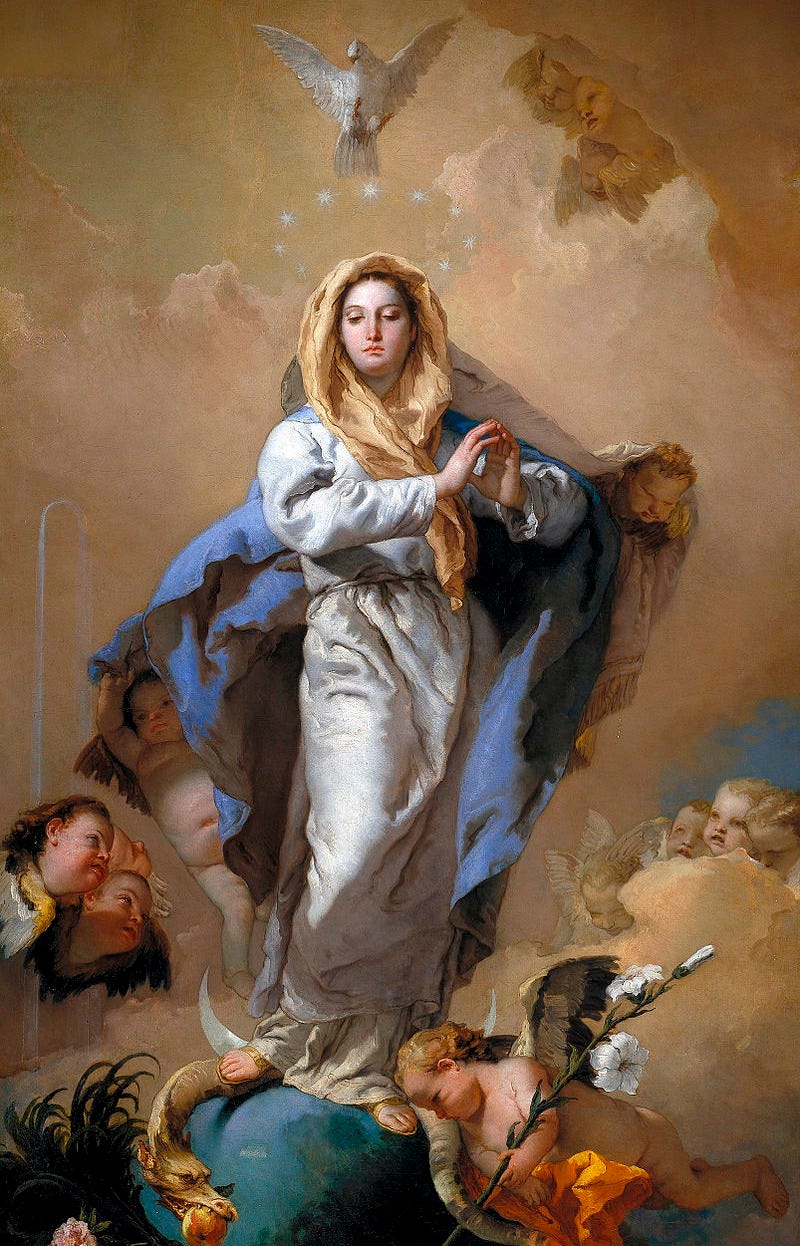
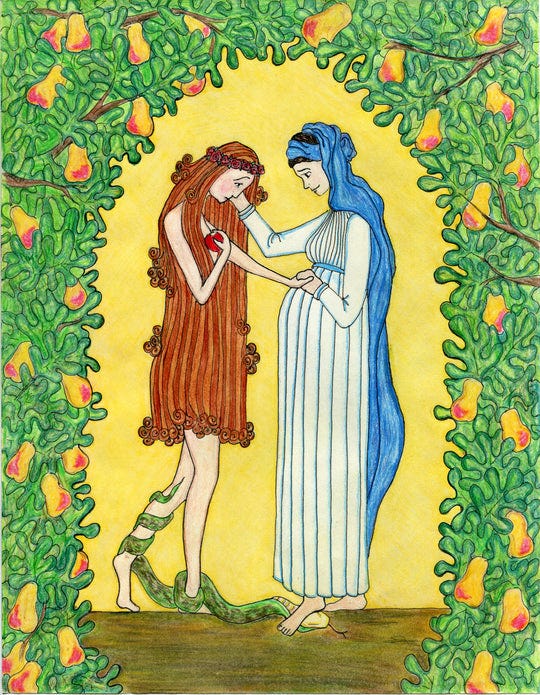
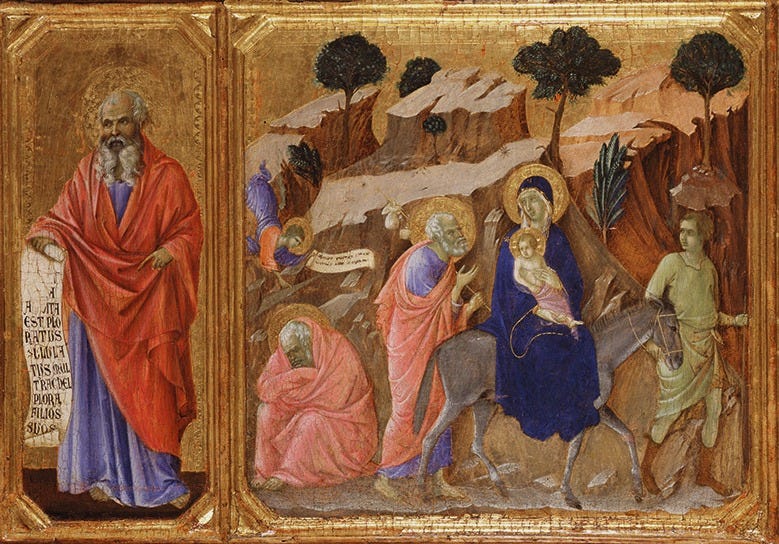

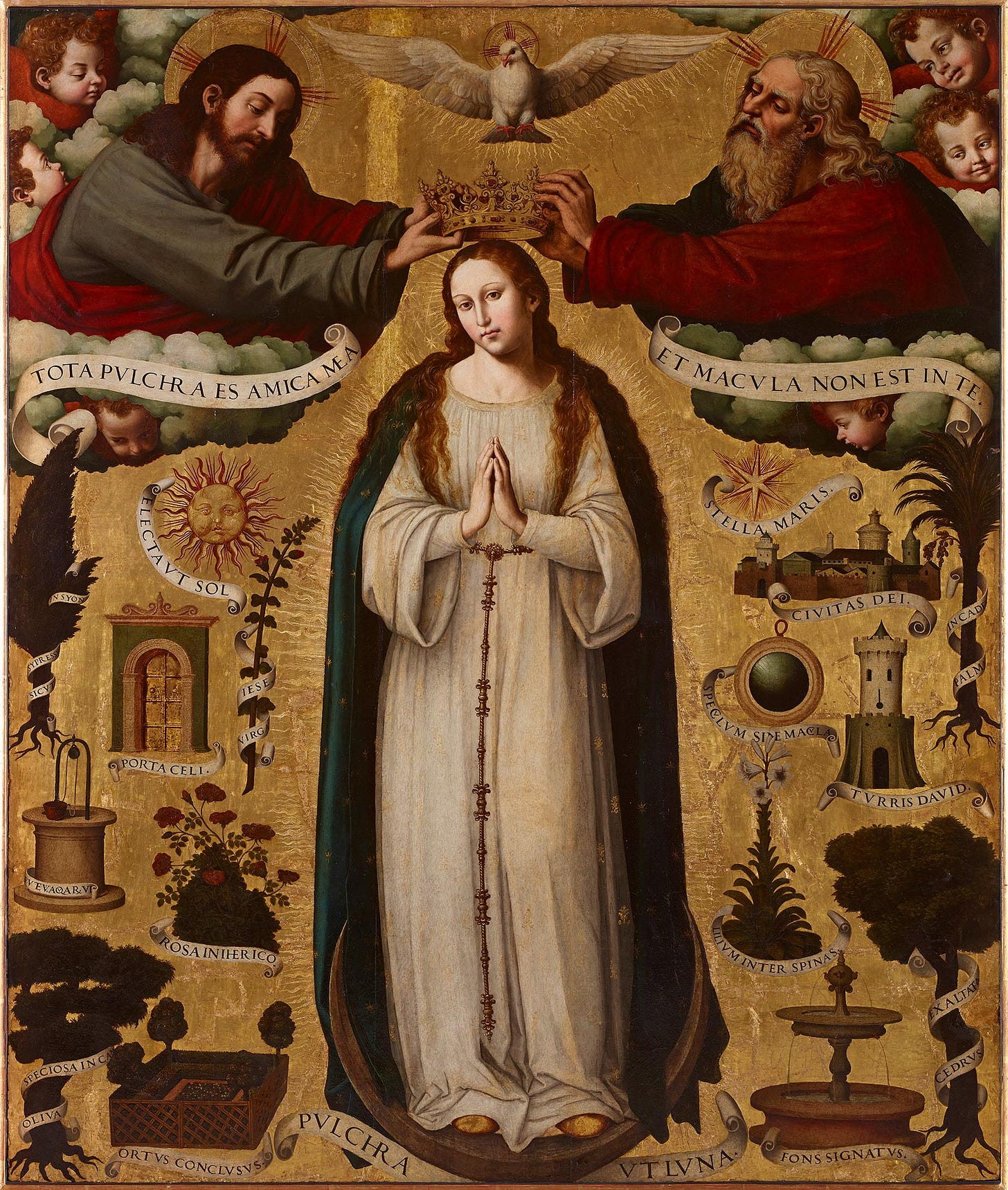
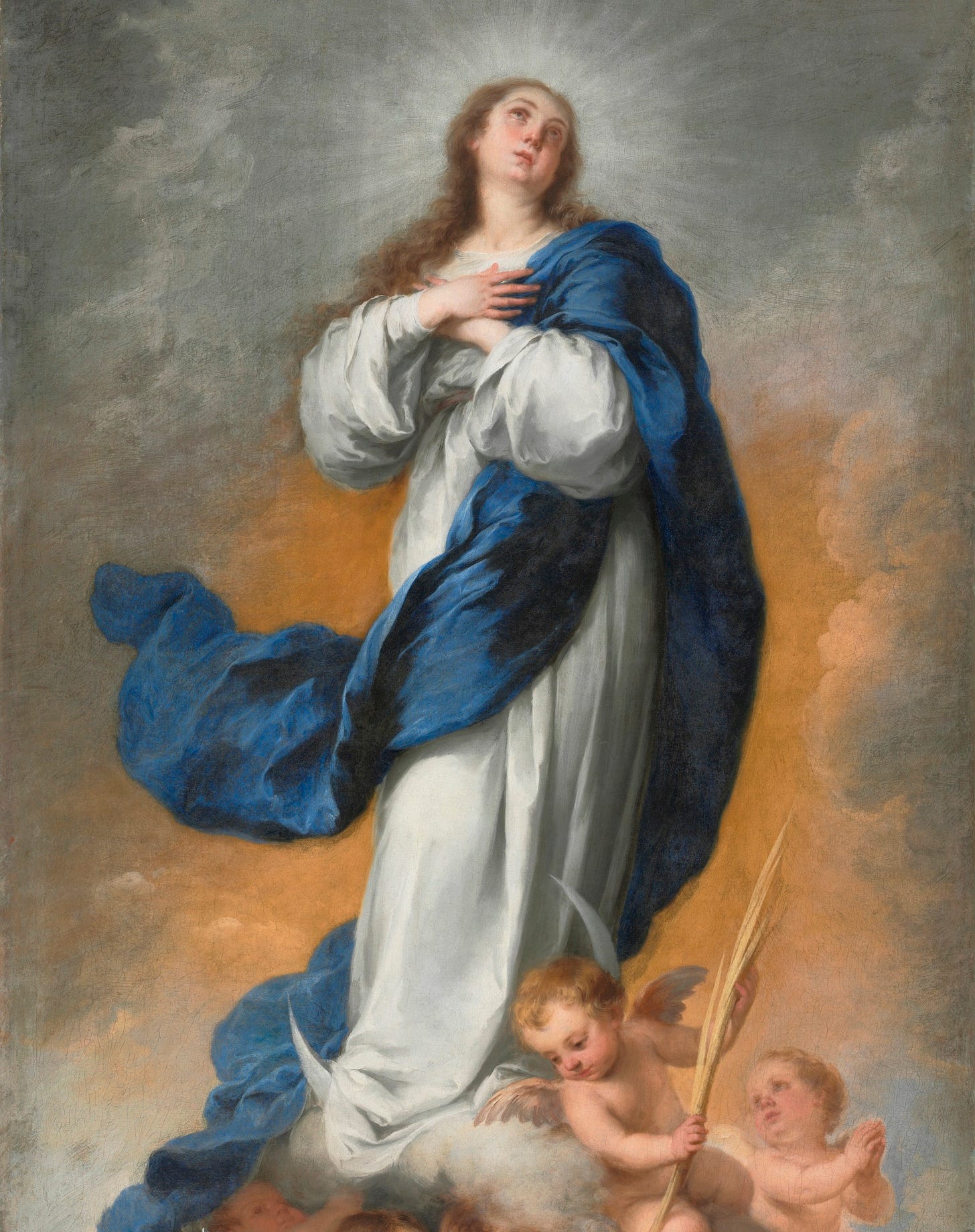
Hey there Benjamin. Regarding your statement “Eastern Orthodox Council of Jerusalem 1672 decreed that, by “Divine Justice,” our Lady was subject not only to “bodily death,” but also “pains in child-bearing.”20 So much for the ancient teaching of the fathers that Mary was free from the curse of Eve.” Where is this in the confession because I have read it a few times and the confession of Dositheus actually rejects that Mary conceived with labor pains. Since the Dormition has been and is still celebrated in the eastern churches then this pious belief inherited since ancient times affirms Mary did in fact experience death or a falling asleep. Looking forward to your reply.